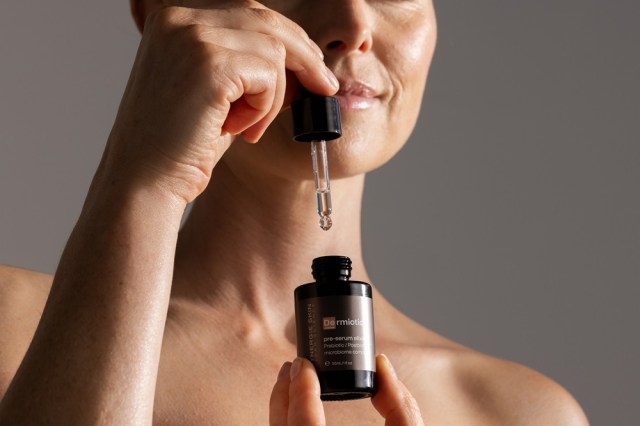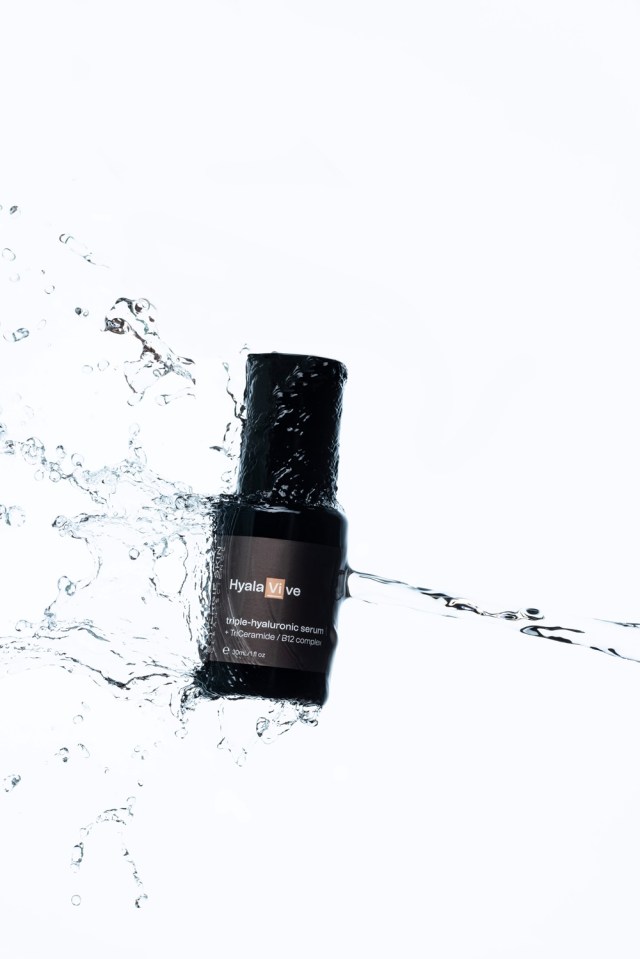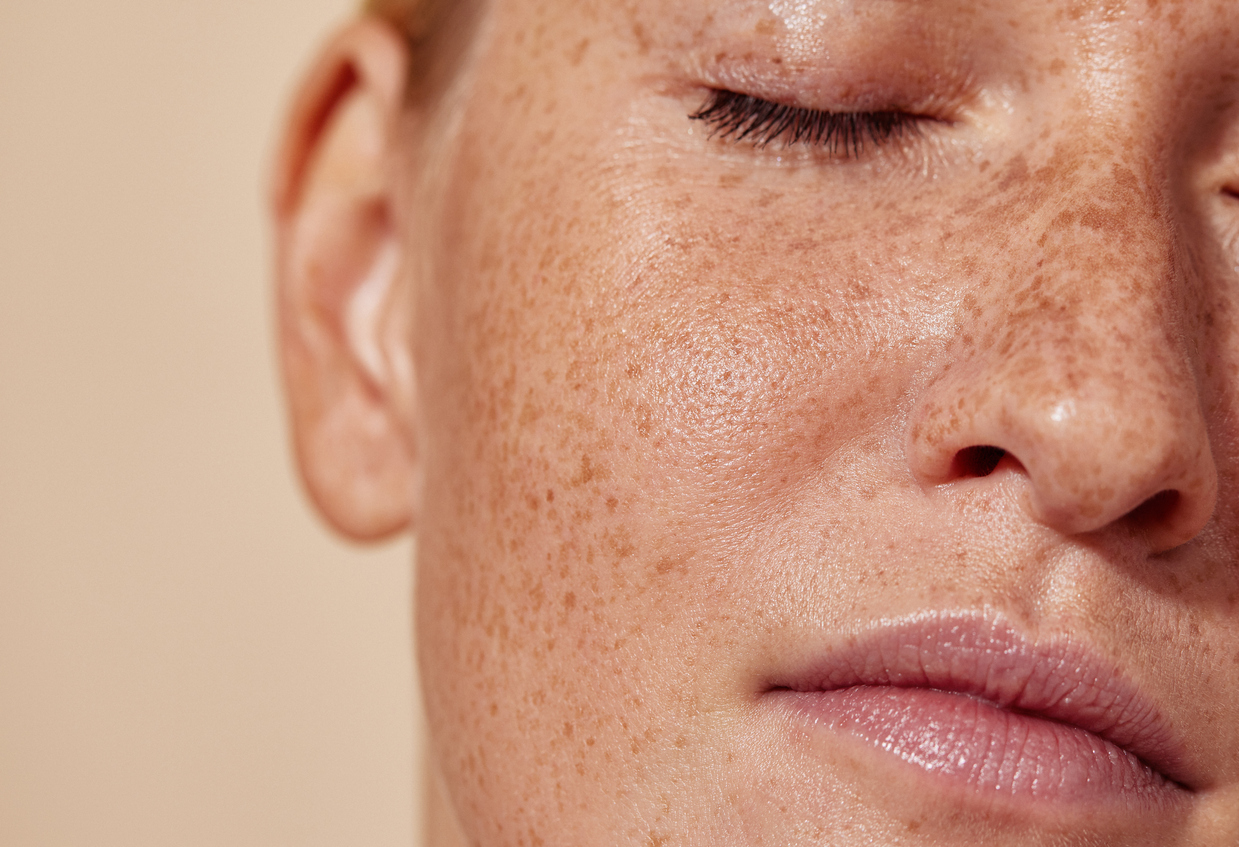The words “impaired barrier” get thrown around in skin consultations with great regularity. The term is often earmarked as a key driver behind clients’ most common skin concerns. In fact, anything from acne to hyperpigmentation, redness to rosacea, may have roots in an impaired skin barrier.
Terri Vinson Jones is an Australian cosmetic chemist, and the founder and formulator of Synergie Skin. One could argue Terri has made it her life’s work to study the functions of the skin barrier, notably in light of the health of the skin microbiome – a fascinating and complex ecosystem worth exploring in greater detail in a future article.
We caught up with Terri to go back-to-basics on best understanding the advantages of developing a strong skin barrier, and how skin therapists can make the most of high-quality actives to achieve such for their clients.
Fighting an impaired barrier
Terri, what are some of the leading causes of an impaired barrier?
“There’s a host of reasons why our skin barrier might take a hit, leaving us with issues like dryness, sensitivity, and redness. This important outer layer acts like your skin’s first line defense system, keeping moisture in and irritants out. It also provides a home for our skin microbiome, a diverse community of microbes that play a crucial role in skin health.
There are many everyday factors that can weaken our delicate barrier. Here are some common culprits:
• Solar exposure: The sun’s UV rays, particularly UVB, directly damages and inflames the barrier. The UV rays can directly disrupt and damage the lipids holding the skin cells together and this can lead to significant water loss, leaving it more vulnerable to damage. UV light also creates free radicals which directly damages the barrier causing inflammation of the protective layer.
• Harsh cleansers: Cleansers containing strong surfactants (like SLS) can disrupt the acid mantle leaving the skin feeling dry and stripped of moisture and natural oils.
• Excessive Exfoliation: Exfoliation removes dead skin cells, but too much of a good thing can be bad for our barrier. Excessive scrubbing (physical exfoliation) or overuse of low pH chemical exfoliants (AHAs, BHAs) can damage the stratum corneum, the outermost layer of the skin barrier. This can lead to redness, irritation, and increased sensitivity. In fact, products that are too acidic or alkaline can disrupt the skin’s delicate pH balance. Those with a compromised barrier should look for products with a pH close to the skin’s natural level (around 5.6).
• Highly fragranced products. Products with artificial fragrance are the most common cause of skin sensitivity, which will directly disrupt the barrier strength. I always opt for fragrance free or low levels of non-irritating essential oils. If you have barrier impairment issues, it’s also important to reduce your exposure to potent active ingredients such as high strength retinoids, certain derivatives of vitamin C such as pure L-ascorbic acid and high level AHA’s. More is not more when it comes to a compromised barrier.”

How does the balance of the skin microbiome contribute to skin health, and what factors can disrupt this balance?
“Our skin’s barrier, which heavily depends on a well-balanced microbiome, acts as an army protecting against harmful environmental elements. A thriving, balanced skin microbiome, teeming with friendly bacteria and other microbes, is like a mini ecosystem for your skin. These beneficial bacteria help fight off harmful invaders, create a shield to retain moisture, reduce inflammation and even contribute to healthy collagen production.
External stressors such as harsh cleansers and personal care products, excessive use of sanitiser, antibiotics, stress, and poor nutrition can disrupt this delicate microbial balance, allowing bad bacteria to take over. This imbalance can lead to dryness, inflammation, and even skin conditions like dermatitis and eczema.”
What are the most notable side effects of an impaired barrier?
“A compromised skin barrier presents with a cascade of symptoms including:
• Increased Trans-Epidermal Water Loss (TEWL): A weakened barrier allows for greater water loss, manifesting as significant dryness, sometimes with a rough or flaky texture.
• Enhanced Environmental Sensitivity: Disruption of the protective layer makes the skin more susceptible to irritation from topical products or environmental triggers, presenting as redness, burning, or stinging.
• Inflammation: Compromised barrier function can lead to a localised inflammatory response, presenting as redness, skin discomfort and swelling.”
Dispelling ingredient myths
Hyaluronic acid is essential for our skin barrier. However, there are often many myths surrounding hyaluronic acid. What are some common misconceptions, and can you debunk them?
“I am a great believer in hyaluronic acid (HA) as a topical ingredient. It is considered the water magnet of the skin and is excellent for replenishing a dehydrated barrier. However, many don’t realise the additional benefits of HA including healing, improving skin immunity and even fighting free radicals.
But let’s clear up some misconceptions. One big myth is that HA is only one ingredient, when in fact, there are many distinct types of HA. In my Melbourne lab, I have four types of HA based on their molecular weight (high, medium, low, and ultra-low/micronised) each achieving different benefits in different levels of the epidermis. High molecular weight HA is the most popular variant and sits on the skin’s surface, giving it a smooth, plump appearance. However, the lighter the HA molecule, the further it penetrates so it’s important to consider different variants to target distinct skin layers offering more diverse benefits.
Another misconception is that topical HA reaches the deep dermis to replace lost HA naturally produced by our skin cells. I have found no scientific evidence to support this myth. Even the tiniest micronised HA molecules, about 2 kilodaltons in weight, are too big to make it through to the dermis. But don’t worry—those little guys still do wonders for our epidermis and they can even send signals to the deeper dermal layer.
There are living cells at the epidermal basal layer where micronised HA can support the immune system and even function as an antioxidant and anti-inflammatory. So, it’s all about choosing the right variant HA for the task at hand and understanding the differences.”
Are there specific ingredient combinations or routines that are often misunderstood, leading to ineffective or potentially harmful practices?
“When it comes to compromising the skin barrier, there are some practices that I think are misunderstood or overused. One of my pet hates is the excessive daily use of AHAs. While AHAs are fantastic, you must always proceed with caution and respect your barrier. One of my favorite AHA’s is lactic acid because it’s a large molecule and doesn’t penetrate too deeply causing irritation. Lactic is also very hydrating, but at the end of the day it still acts as a chemical exfoliant and removes the surface layer of the skin. You don’t want to strip away skin layers too often, especially if your skin is sensitive or the skin is not ready to naturally shed. It’s best to limit exfoliation to 2-3 times a week unless you’re using a super gentle formula.
Another aspect of combining ingredients that concerns me is the lack of education on how certain ingredients chemically interact. Take niacinamide, for example. Vitamin B3 is one of my must-have actives, but it should not be mixed with acidic solutions (below pH 4) as this can turn niacinamide into nicotinic acid which can cause undesirable facial flushing.
Another ingredient combo to avoid is retinol with acidic products because it can partially neutralise the retinol rendering it less effective. So, it’s important to pay attention to pH levels and use certain ingredients at different times of the day. As a rule, I recommend using L-ascorbic acid, AHA’s and BHA’s in the morning and vitamins A and B serums at night. These are some simple rules to keep in mind for optimising topical results.”
Golden ingredients for barrier health
Ceramides play a key role in the skin barrier and maintaining a strong and resilient skin barrier. What happens when ceramide levels are compromised? Why are they important? Can you share insights on the most effective ways to incorporate ceramides into a skincare routine?
“Ceramides are like the unsung lipid heroes of skincare, making up a whopping 40% of our epidermis. Think of them as the mortar holding our skin cells together, with the cells being the bricks and ceramides being the glue. They are superstar molecules for ensuring your barrier forms a tight, waterproof protective layer.
I use three types of ceramides in my lab (MP, AP, and OEP) as they are bioidentical and synergistic with our own biochemistry. As we age, like so many beneficial skin molecules, our ceramide levels drop and this can weaken our skin barrier. That’s where using a mix of ceramides can really make a difference in keeping moisture locked in and shielding the barrier from irritants. When ceramide levels dip, the cracks in the barrier widen, leading to dryness, irritation, increased sensitivity, redness and even dermatitis.”

Within Synergie Skin’s repertoire, choose three products best suited to assist in the repair of an impaired barrier and discuss what makes each so effective.
“Here are my stand-outs for their ability to restore a compromised skin barrier:
#1: Vitamin B Serum or XCell B Serum: Vitamin B serum is easily the product that would put me into a state of anxiety if I was without it… even for a day! The superhero ingredient niacinamide is my personal favourite for several reasons. It promotes ceramide production, enhances production of three major epidermal proteins (keratin, involucrin and filaggrin) for a healthy barrier, reduces inflammation, promotes an even skin tone and increases skin immunity. It’s also incredibly stable, effectively penetrates the skin to target specific cells, and is gentle enough for all skin types.
#2: Dermiotic Preserum Elixir – Balancing our skin microbiome is essential, and incorporating prebiotic and postbiotic skincare will help reduce barrier disruption, sensitivity, dryness and even acne. I like to compare balancing the microbiome with looking after your garden. Postbiotics (beneficial molecules produced by good bacteria) provide the seeds that flourish on the skin and promote skin vitality, and the Prebiotic is the fertiliser that provides the best skin food for a healthy garden environment full of good bacteria, whilst inhibiting those pesky weeds or bad bacteria.
#3: HyalaVive Serum – This hydrating serum was born from my vision to address the growing concerns of barrier dysfunction and inflammation on multiple levels. There are so many hyaluronic acid serums on the market, and I waited until I had the perfect ingredient combo with three hyaluronic acid derivatives, three bioidentical ceramides and regenerative and anti-inflammatory vitamin B12. Side note, B12 is a naturally pink molecule so the vibrant colour of this serum has zero artificial colour. This ingredient combination was created to revolutionise epidermal treatment at home, strengthen the barrier, and take hydration and protection to new levels.”
Name one hero learning you advise skin therapists to pass onto their clients in the maintenance of a healthy skin barrier.
“Your skin barrier acts as the primary defense against the external environment, making it incredibly important. However, it is both vulnerable and vital. An aggressive approach to skincare is no longer what we should be looking at for clients with a compromised barrier. We need to consider that delicate balance between just enough cellular stimulation to kick start reparative cellular processes but not too much to cause excessive inflammation. Skin therapists are trained to understand how far they can push their client’s skin to achieve results and those with a compromised barrier must be treated very gently.
We must also consider nutrition, supplementation, exercise, reducing stress and having quality sleep. Skin therapists have a unique opportunity to guide clients towards a holistic approach to healthy skin. By understanding the interplay between topical skincare, clinic treatments and overall well-being, you can become a true partner in their journey towards a lifetime of radiating confidence from within.”
“An aggressive approach to skincare is no longer what we should be looking at for clients with a compromised barrier. We need to consider that delicate balance between just enough cellular stimulation to kick start reparative cellular processes but not too much to cause excessive inflammation.”
Read the current issue of our digital magazine here:
- For more news and updates, subscribe to our weekly newsletter
- Follow us on Instagram
- Like us on Facebook
- Join Australia’s largest network of beauty industry professionals on LinkedIn
- Subscribe to our print magazine
Have an idea for a story or want to see a topic covered on our site and in our pages? Get in touch at info@professionalbeauty.com.au.

